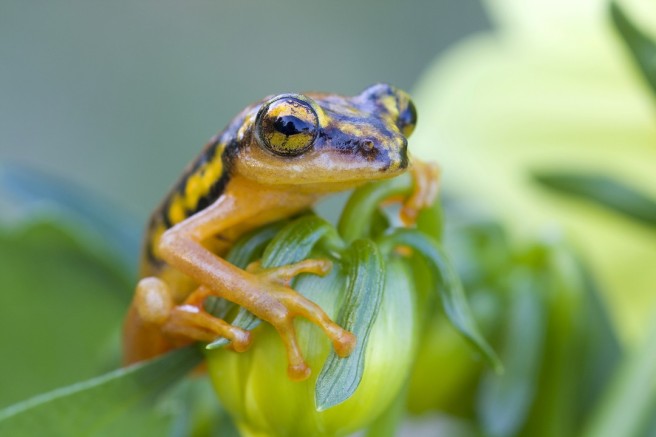A group of researchers investigated the presence and distribution of amphibian pathogens (chytrid fungus and ranavirus), using environmental samples and collected amphibians in Madagascar.
Follow our blog ! Subscribe to our RSS fluxIn June 2015, Kolby et al. published a paper entitled “Rapid Response to Evaluate the Presence of Amphibian Chytrid Fungus (Batrachochytrium dendrobatidis) and Ranavirus in Wild Amphibian Populations in Madagascar” in the PLoS One journal.
Summary: In this article, the authors performed a rapid response investigation to evaluate the presence and distribution of amphibian pathogens in Madagascar following their identification of amphibian chytrid fungus (Batrachochytrium dendrobatidis, Bd) and ranavirus in commercially exported amphibians. This targeted risk-based field surveillance program was conducted from February to April 2014 encompassing 12 regions and 47 survey sites. The researchers simultaneously collected amphibian and environmental samples to increase survey sensitivity and performed sampling both in wilderness areas and commercial amphibian trade facilities. Bd was not detected in any of 508 amphibian skin swabs or 68 water filter samples, suggesting pathogen prevalence was below 0.8%, with 95% confidence during their visit. Ranavirus was detected in 5 of 97 amphibians, including one adult Mantidactylus cowanii and three unidentified larvae from Ranomafana National Park, and one adult Mantidactylus mocquardi from Ankaratra. Ranavirus was also detected in water samples collected from two commercial amphibian export facilities. This study also provides the first report of an amphibian mass-mortality event observed in wild amphibians in Madagascar. Although neither Bd nor ranavirus appeared widespread in Madagascar during this investigation, additional health surveys are required to disentangle potential seasonal variations in pathogen abundance and detectability from actual changes in pathogen distribution and rates of spread. Accordingly, those results should be conservatively interpreted until a comparable survey effort during winter months has been performed. It is imperative that biosecurity practices be immediately adopted to limit the unintentional increased spread of disease through the movement of contaminated equipment or direct disposal of contaminated material from wildlife trade facilities. The presence of potentially introduced strains of ranaviruses suggests that Madagascar’s reptile species might also be threatened by disease. Standardized population monitoring of key amphibian and reptile species should be established with urgency to enable early detection of potential impacts of disease emergence in this global biodiversity hotspot.
Reference: Kolby, J.E., Smith, K.M., Ramirez, S.D., Rabemananjara, F., Pessier, A.P., Brunner, J.L., et al. (2015). Rapid Response to Evaluate the Presence of Amphibian Chytrid Fungus (Batrachochytrium dendrobatidis) and Ranavirus in Wild Amphibian Populations in Madagascar. PLoS ONE 10(6): e0125330. doi:10.1371/journal.pone.0125330.
To learn more about this article, you can download: Kolby et al. 2015


